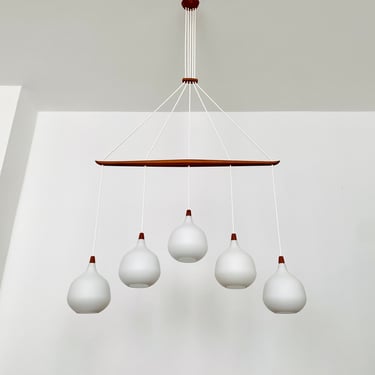
Swedish Opaline and Teak Chandelier by Uno and Östen Kristiansson for Luxus | 1960s

Wonderful Swedish opal glass chandelier from the 1960s. Great and exceptionally minimalist design with a fantastically elegant appearance. Very nice teak details. Very rare version ...
$$$$$ · Indexed April 2, 2025 · Source
etsy.com
Content may be subject to copyright. Terms of Use
Muc Design
München, Germany
Still looking? Try a search.
